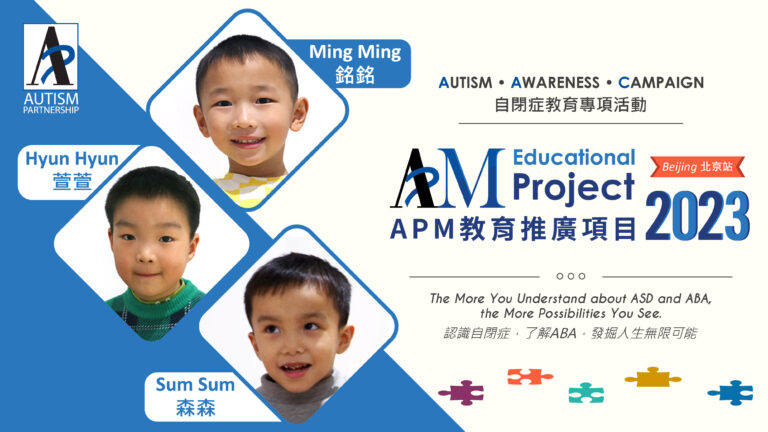
Sustaining attention is one of the most crucial factors to improve learning efficiency. Parents are often concerned when their children fail to stay focused in a task or being easily distracted while completing a task. Due to the covid situation, many students have to learn through online platforms, which could be even more challenging for young children with weak learning-how-to-learn skills.
Below are 5 fun games that parents can play with their children to help improve their attending.

Teaching Tips:
If the child is distracted or starts to engage in self-stimulatory behavior in one of the trials, all objects (Including the ones that have already been retrieved) will go back to the table and we will have to restart the entire segment. For children who are not familiar with the names of the items, you can perform the task in a matching format, which you show the child the picture of the item that you want your child to get as you issue the instruction.

Activity extension:
You may increase the difficulty by hiding all the pieces all at once; this will challenge your child further more as he/she needs to sustain longer attention and memory. After finding all the pieces, he can get access to the activity.

Activity extension:
A more advanced version could be involving more pictures and pictures with more minor differences , such as the same character doing different actions (E.g. Mommy is brushing teeth vs. Mommy is cutting carrots) or different characters doing the same action (e.g.: Mommy is sleeping vs. Grandma is sleeping etc.).

Activity extension:
Depending on your child’s performance, you can increase the number of objects in the field or the number of objects being taken away.

Activity extension:
According to your child’s performance, you can extend the time as you move the cups around and/or increase the number of cups.
These are some of the fun games that we often play in our office to help our child with attending. For more in-depth and detailed training videos, please visit the resource website of Autism Partnership(APSPARKS.COM)!
Ms. Christy Lai is a Board Certified Behavior Analyst with a Master of Science in Applied Behavior Analysis from St. Cloud State University and a Bachelor of Arts in Psychology from the University of Michigan, Ann Arbor. Ms. Lai joined Autism Partnership (AP) in 2011 and she has extensive experience in working with children with ASD. Ms. Christy Lai currently take lead of the case supervision in the new established AP Beijing center. At the same time, she oversees the Little Learners program in Hong Kong and Shanghai and consults families in Asia. She directs overseas training to staff in the Train the Trainer program and provides parent education to families with children with ASD. She also conducts Jumpstart and PIIP programs locally and internationally. In additions, she is keen to take part in overseas ASD conferences and take lead of the design and production of AP teaching materials. Moreover, she helps with producing ABA training videos and articles in the APSPARKS website for public education.

Every little life is a special present for a family. From the time a baby is born, parents journey through lots of highs and lows, wishing for their child to grow up with a big smile, make great friends, find their own way in a job they love, and create a happy family. However, for […]

Parenthood is a journey filled with unexpected twists and turns, challenges, and moments of profound joy. For Adam’s father, the discovery that his son, Adam, was on the autism spectrum marked the beginning of a unique chapter in their lives. This is the story of a father’s realization, acceptance, and the unconditional love and strength […]

Autism Spectrum disorder can be diagnosed as early as 18 months. Research shows strong evidence on how effective Applied Behavior Analysis (ABA) can help children with Autism. It helps to deal with children’s challenging behaviors such as inattention, aggression, self-stimulation, etc. Howard, et al (2005) conducted a study to compare the effectiveness of 3 treatment […]
Please share to let more people learn about ASD and ABA therapy:
AP holds the belief that with quality Autism Partnership Method (APM) treatment, individuals with autism should reach their fullest potential and achieve the greatest degree of independence and highest quality of life possible.
Sign up now to get ABA and Autism related news delivered to your inbox. Enter your email to get started
Hong Kong Center
Kowloon Center

All information received will always remain confidential. We will contact you as soon as we review your message. Thanks